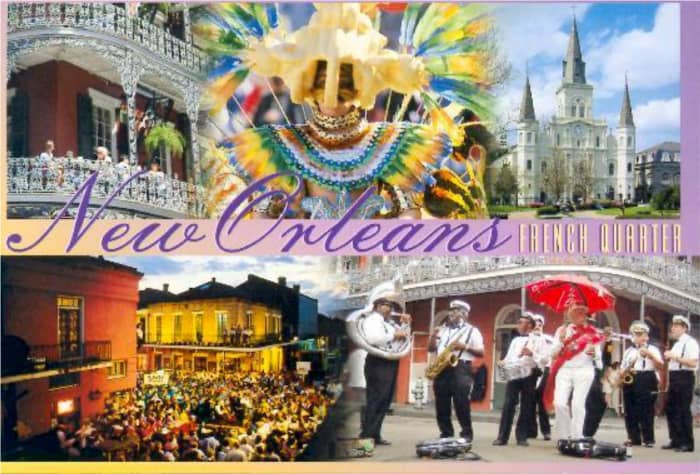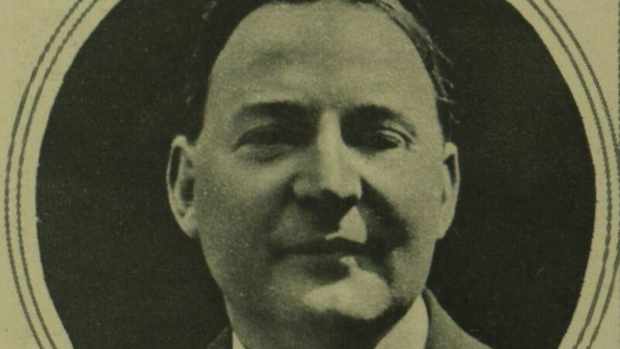History, Culture, and Music of New Orleans, Louisiana
New Orleans, Louisiana
New Orleans, Louisiana, is the most unusual city in America. It is famous for Cajuns, Mardi Gras, voodoo, and jazz. Nicknamed the "Crescent City" because of its shape, it is filled with peculiar traditions. It has always been bawdy and dedicated to debauchery.
Built on a patch of swampland between the Mississippi River and Lake Pontchartrain, the humidity, mosquitoes, disease, hurricanes, and floods dissuaded most folks from settling there. New Orleans has one of the highest levels of rainfall in the United States. That is a problem because much of the city is below sea level—built on low ground to take advantage of ocean-going shipping—and has been slowly sinking for centuries.
The French language and Catholicism made New Orleans different. Protestantism was always scorned there. This is why the city was somewhat isolated from the rest of the United States.
It sits 110 miles upstream from the mouth of the Mississippi. The elevations of the city range from 12 feet above sea level to 6.5 feet below, and the rich folks live above the poor as they do in every city in the world, especially in habitats prone to floods.
Louisiana
Louisiana squats in a gulf coastal plain approximately 300 X 300 miles square. The Spanish first explored it in 1528. La Salle (who founded my hometown of St Joseph, Michigan) claimed Louisiana for France in 1682 and named it after the Sun King, Louis XIV. He thought it important because of its strategic location at the mouth of the mighty Mississippi.
It is so French that Louisiana doesn't have counties like the rest of the United States; it has parishes. Known as the Pelican State, the pelican is the state bird, the magnolia the state flower, and the bald cypress the state tree.
Louisiana produces the second most natural gas of all American states and 1/3 of the U.S. total. It boasts 2,482 islands, manufactures the most furs in America at 1.3 million per year (otter, mink, and beaver), and harvests the most oysters and crawfish—10 million pounds per annum.
Founding of New Orleans
Jean-Baptiste Le Moyne de Bienville founded New Orleans in 1718. He was birthed in Montreal, one of 14 children born to parents from Normandy. After joining the French Navy as an explorer at age 17, he was sent with his older brother to explore the coastline of the Gulf of Mexico. In 1743, Bienville retired to Paris and produced many historical maps and panoramas [1].
From 1717-1720, Paris deported boatloads of criminals to Louisiana. A quarter of the original male population were smugglers and convicted felons. In 1721, New Orleans was described as "100 wet, wretched hovels on flood-prone banks full of malaria and alligators, and infested with snakes." A massive hurricane struck the following year that blew down the whole town. Riff raff and undesirables, people nobody else wanted, repopulated the city [2].
While the original settlers of New Orleans were French, they were followed by Spaniards, and then the French Acadians (Cajuns) came from Nova Scotia and the surrounding area (Acadia). The Cajuns fled from the conquering British Army to Louisiana in 1754-1763 because they did not want to live under British rule. The population got another boost from Frenchmen fleeing the horrors of the French Revolution after 1789.
Back in 1762, King Louis XV lost a bet and had to give New Orleans to his cousin, the King of Spain, Charles III. In 1800, Spain gave it back to France, but then Napoleon sold all of Louisiana to the United States three years later. Americans soon came to live there, as did Germans, Irish, and Sicilians.
Only 97 blacks inhabited New Orleans in 1771—3% of the population. That number jumped to 300 within six years, and 820 in 1788. By 1805, blacks were 20% of the people in Louisiana. The Census of that year counted 8,500 souls in New Orleans: 3551 whites, 3105 enslaved people, and 1556 free blacks [3].
The Great New Orleans Fire of 1788 burned down 856 buildings, followed six years later by another that burnt down 212 remaining buildings. This time the wooden structures were replaced by Spanish architecture built with bricks [4]. The oldest building that survived the fires is the Ursuline Convent, built in 1752.
In 1791, the wettest town in the Western Hemisphere boasted twice as many taverns as all other commercial establishments combined. Gambling ruled, as evidenced by the 54,000 packs of playing cards imported in that one year into a town of 8,000. By 1800, after 37 years of mild rule by Spain, New Orleans had become a haven for pirates, smugglers, and prostitutes.
The Slave Revolt in Haiti of 1804 brought a new influx of French aristocrats fleeing that island, as well as a goodly number of enslaved people fleeing the violence along with their former masters. The Haitian Revolution led to an ongoing experiment where the first (and only) country in the Western Hemisphere was to be led by black people. Many Haitians fled the island for New Orleans, apparently preferring to live where whites ruled. New Orleanians welcomed them because they spoke French. The number of Haitian refugees by 1809 is estimated to include 3200 slaves, 3100 free blacks, and 2700 whites [5].
History of New Orleans
By 1800, sugar was king. But then came 100 years of epidemics; smallpox, malaria, and yellow fever. These problems were naturally exacerbated by dirty people, a transient population, sojourning sailors, and poor sanitation. The last yellow fever epidemic was in 1905.
Everywhere in the New World, there was a shortage of European women. In the first few centuries, European men outnumbered European women 50 to 1 on ships headed west, and that is why men sought out women who were Indian or African—that's all there was.








